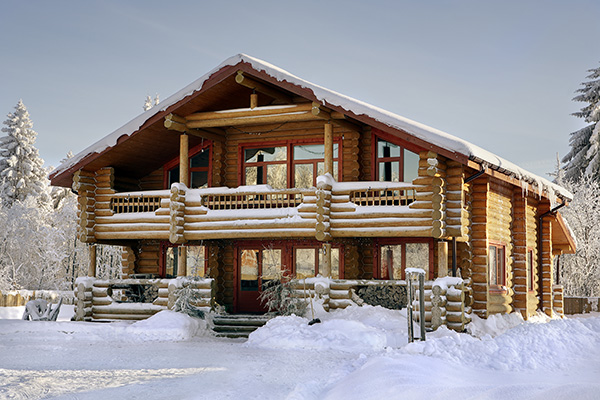7 Essential Winter Home Prep Projects
With winter on the horizon, now is the time to prepare your home for this unpredictable season. Properly preparing your home for winter will help keep you and your family comfortable, reduce heating costs and prevent structural issues that could result in costly repairs later. Most winter home prep can be completed as DIY projects. And even the ones that require professional assistance are a small investment now that can help you potentially save thousands later. Let’s get started: 
Start at the Top — Your home’s roof is the first line of defense against leaks and water damage. Inspect it for any loose, worn or missing shingles and have them replaced. Also look for any breaks in the flashing seals around vent stacks and chimneys. If your home has a flat roof (often found in warmer climates), use a leaf blower throughout the season to clear off leaves and other debris; this will help you detect any damaged areas.
Clear out Gutters — Gutters are another way to protect your home from water damage, but they only work properly when they’re clean. To prevent water from backing up and causing leaks, clean out all the fall leaves and other debris that has accumulated over the past few months. This not only protects against water damage, it will also keep pests and rodents from making themselves at home in the mess. If you find any missing or damaged gutters or fascia boards, have them replaced.
Send Water Away — Gutters are only one part of the equation when trying to minimize the chance of water getting where it doesn’t belong. You’ll also want to make sure the water they collect gets diverted from enough away from the home’s foundation. To do that, add extensions to your downspouts. Ideally, you want the water to flow at least three feet away from the foundation to prevent the possibility of leaks and damage.
Inspect the System — Have your furnace or heat pump inspected and repaired, if needed, by a professional, who will catch any current or potential issues before they leave you out in the cold. In addition to keeping you warm, a properly running heating system minimizes the risk of carbon monoxide issues and helps reduce heating costs. As the season progresses, remember to change the furnace filter monthly to ensure maximum efficiency.
Catch the Cracks — Winter is all about keeping cold air and moisture — and in warmer climates, pests — out of your home, which is why you need to find and fix any cracks around doors and windows. Inspect around window and door frames outside and if you find any gaps larger than the width of a nickel, fill them in with weather-resistant silicone caulk. Inspect all door sweeps and weather stripping and replace any that appear worn or cracked.
Sweep that Chimney — A crackling fire is a cozy way to help heat your home, but before you burn the first logs of the season, you need to make sure you can do it safely. Call a chimney sweep to inspect the chimney and clean it if needed. The inspection and cleaning together should ring in at less than $500, but any amount is a small price to pay if it prevents a chimney fire and the possibility of carbon monoxide leaking into your home.
Insulate Hot Water Heater and Pipes — What’s not to love about a simple project that can save money and keep you more comfortable? Wrapping your hot water heater and pipes can help reduce utility costs while maintaining a comfortable water temperature for bathing. You can hire a plumber to do the job, or take it on yourself with specially cut insulation or foam available from home improvement centers.
No matter the climate you live in, the winter season can be hard on your home. Taking these precautions at the start of the season will help ensure your home makes it through winter without any serious issues and you stay comfortable and cozy until spring arrives.
